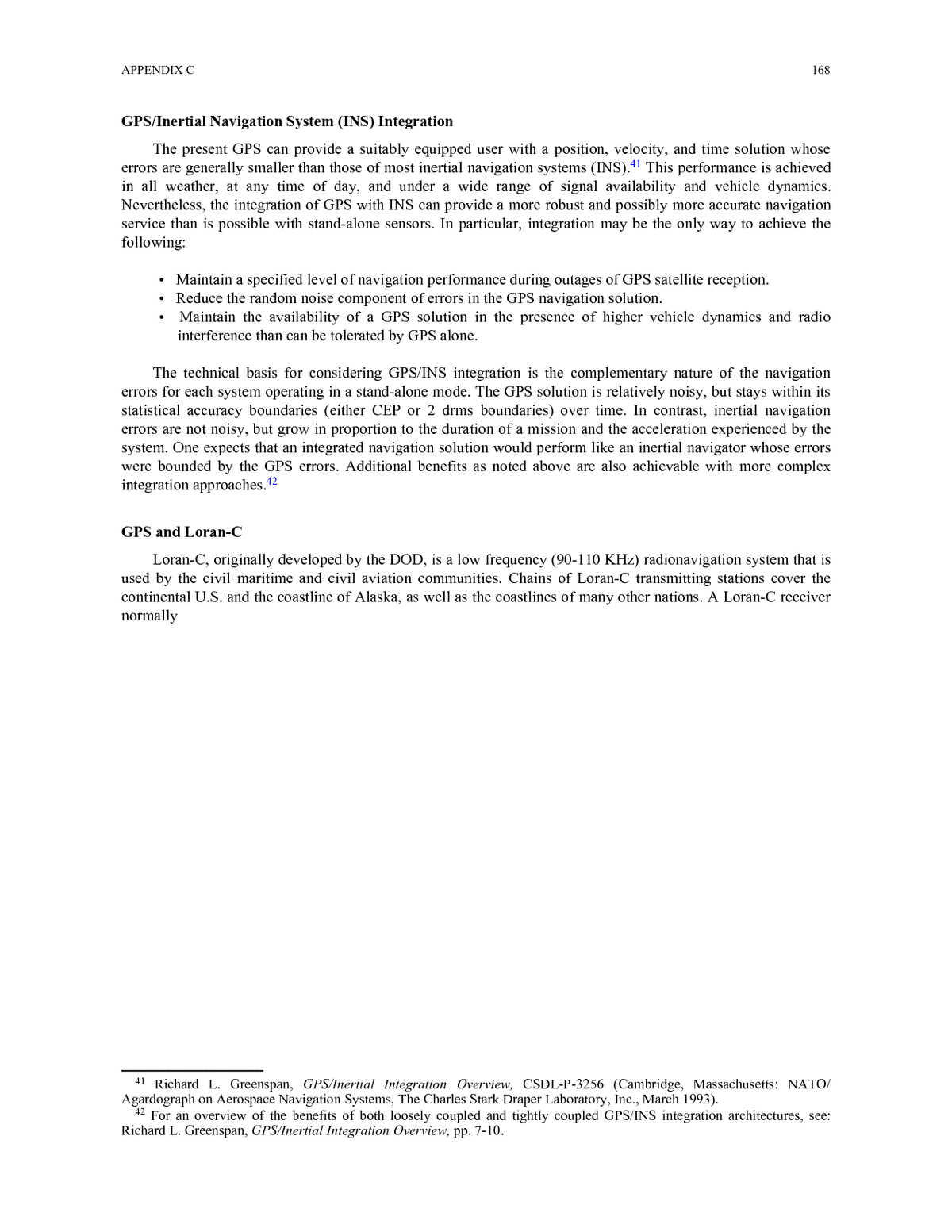Below is the uncorrected machine-read text of this chapter, intended to provide our own search engines and external engines with highly rich, chapter-representative searchable text of each book. Because it is UNCORRECTED material, please consider the following text as a useful but insufficient proxy for the authoritative book pages.
APPENDIX C 168 GPS/Inertial Navigation System (INS) Integration The present GPS can provide a suitably equipped user with a position, velocity, and time solution whose errors are generally smaller than those of most inertial navigation systems (INS).41 This performance is achieved in all weather, at any time of day, and under a wide range of signal availability and vehicle dynamics. Nevertheless, the integration of GPS with INS can provide a more robust and possibly more accurate navigation service than is possible with stand-alone sensors. In particular, integration may be the only way to achieve the following: ⢠Maintain a specified level of navigation performance during outages of GPS satellite reception. ⢠Reduce the random noise component of errors in the GPS navigation solution. ⢠Maintain the availability of a GPS solution in the presence of higher vehicle dynamics and radio interference than can be tolerated by GPS alone. The technical basis for considering GPS/INS integration is the complementary nature of the navigation errors for each system operating in a stand-alone mode. The GPS solution is relatively noisy, but stays within its statistical accuracy boundaries (either CEP or 2 drms boundaries) over time. In contrast, inertial navigation errors are not noisy, but grow in proportion to the duration of a mission and the acceleration experienced by the system. One expects that an integrated navigation solution would perform like an inertial navigator whose errors were bounded by the GPS errors. Additional benefits as noted above are also achievable with more complex integration approaches.42 GPS and Loran-C Loran-C, originally developed by the DOD, is a low frequency (90-110 KHz) radionavigation system that is used by the civil maritime and civil aviation communities. Chains of Loran-C transmitting stations cover the continental U.S. and the coastline of Alaska, as well as the coastlines of many other nations. A Loran-C receiver normally 41 Richard L. Greenspan, GPS/Inertial Integration Overview, CSDL-P-3256 (Cambridge, Massachusetts: NATO/ Agardograph on Aerospace Navigation Systems, The Charles Stark Draper Laboratory, Inc., March 1993). 42 For an overview of the benefits of both loosely coupled and tightly coupled GPS/INS integration architectures, see: Richard L. Greenspan, GPS/Inertial Integration Overview, pp. 7-10.

